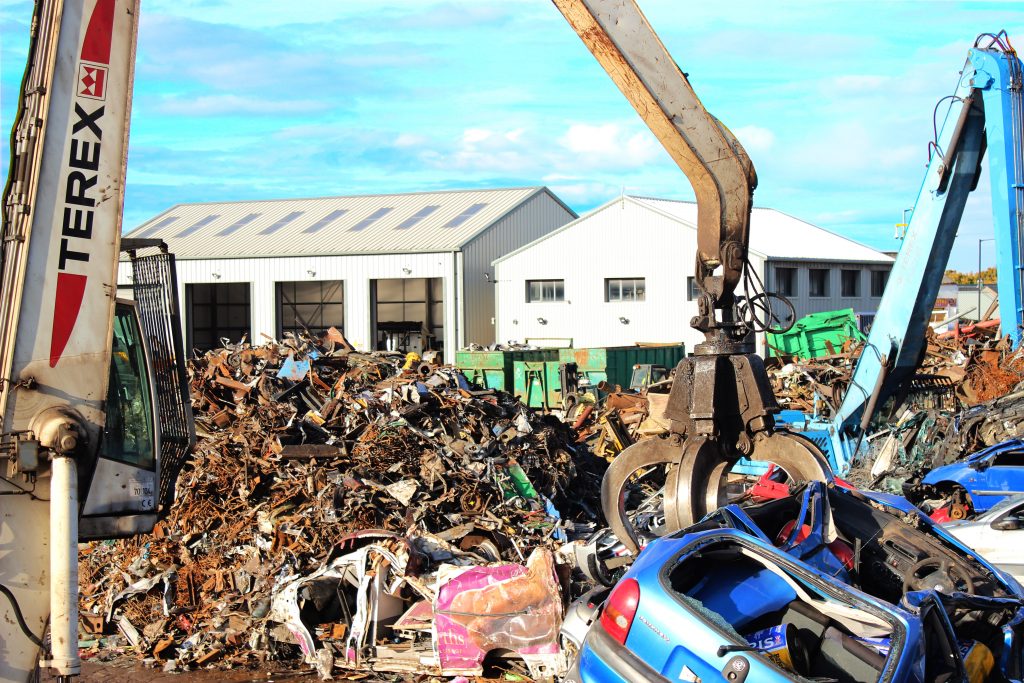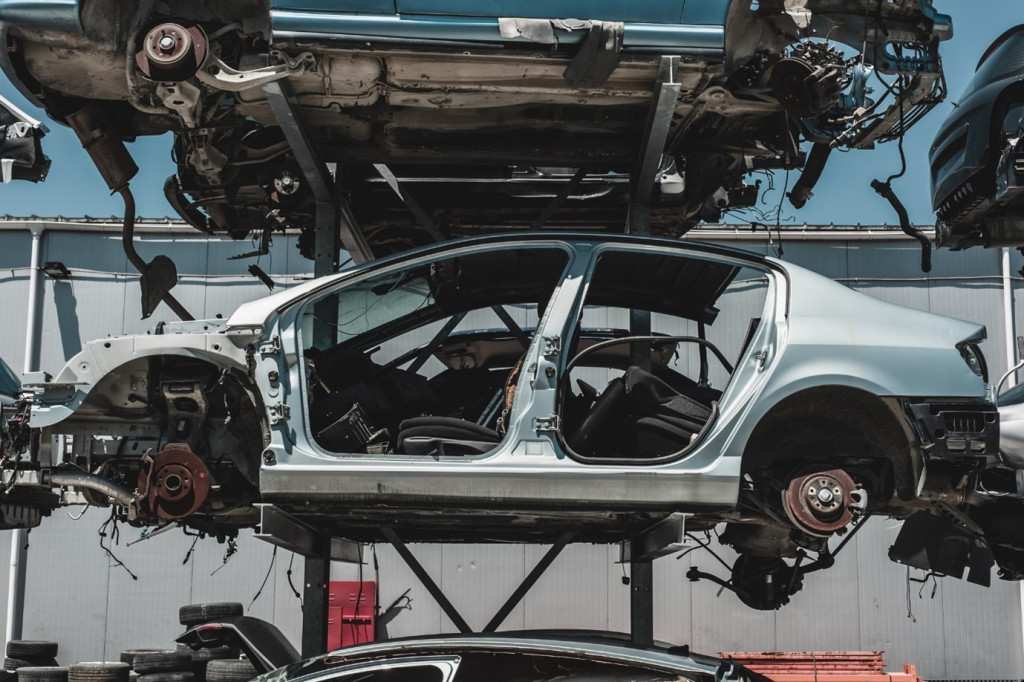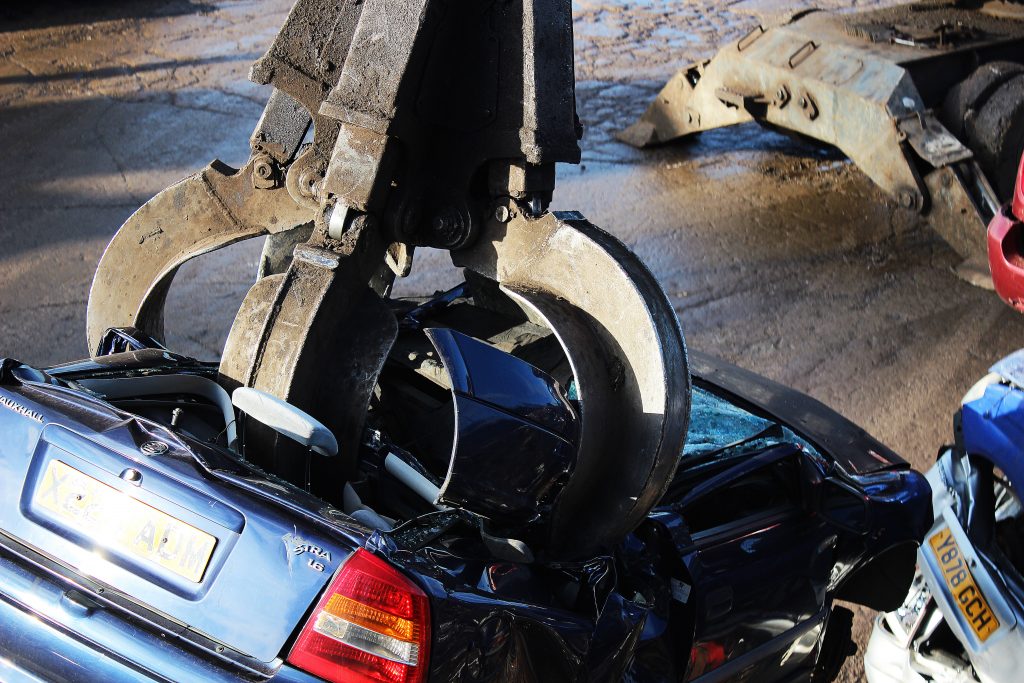Scrapping a car is no longer as simple as driving it to the nearest scrapyard. With stricter environmental regulations and vehicle recycling standards, it’s important to follow the correct legal procedures to ensure your car is scrapped safely, responsibly, and in compliance with the law.
This guide covers everything you need to know, from informing the DVLA, obtaining a Certificate of Destruction (CoD), and understanding what happens to your car after scrapping to exploring what parts can be recycled and their environmental benefits.
Informing the DVLA When Scrapping Your Car
Before you scrap your car, you must notify the Driver and Vehicle Licensing Agency (DVLA).
If you fail to do this, the DVLA will assume the car is still on the road, and you’ll remain responsible for road tax and any potential legal obligations.
To officially deregister your vehicle, you’ll need a Certificate of Destruction (CoD)—a document issued by an Authorised Treatment Facility (ATF) that proves your car has been scrapped legally.
Can I Dismantle My Car for Spare Parts?
Tempted to strip your car down for valuable parts? Be careful – unless your vehicle is scrapped at an ATF, the DVLA won’t recognise it as destroyed, and you could still be held liable for tax and legal responsibilities. Plus, improper dismantling can lead to toxic waste issues if fluids and hazardous materials aren’t handled correctly.
The Scrapping & Recycling Process
Once your car has been taken to a licensed recycling centre, it goes through a structured process to ensure maximum recycling and minimal environmental impact.
Step 1: Transporting the Vehicle
Most scrapyards offer a collection service if your car isn’t drivable. Specially licensed vehicles transport scrap cars safely.
Step 2: Vehicle Depollution
Before recycling can begin, your car must go through vehicle depollution to remove hazardous materials. This includes:
- Fluids & Oils: Engine oil, fuel, coolant, brake fluid, and refrigerants must be safely extracted.
- Battery & Mercury Components: Toxic materials like lead-acid batteries and mercury switches are removed for safe disposal.
- Tyres & Airbags: Tyres are recorded as controlled waste, while airbags are safely deployed due to their explosive potential.
Step 3: Dismantling & Recycling
Once depolluted, the car is stripped for recyclable materials:
- Metal: The car body, engine, and internal structures are crushed and sent to steel mills for reuse.
- Glass: Windows and windscreens are recycled into concrete and asphalt.
- Plastic & Rubber: Interior plastics, bumpers, and tyres are repurposed for other industries.
The remaining car shell is either flattened or compacted into a cube for easier transportation to a shredder, where it’s broken down into small chunks for further processing.
Recycling in the steel industry alone saves enough energy to power 18 million homes for a year!
What Happens to Your Car After Scrapping?
Many people assume scrapping a car means it simply gets crushed, but there’s much more to it.
Step 1: Reusing & Reselling Parts
Before the car is shredded, scrapyards salvage valuable parts that can still be used. This includes:
- Engines & Gearboxes: Refurbished and resold.
- Catalytic Converters: Contain platinum and palladium, which are valuable for reuse.
- Wheels & Tyres: Good quality tyres are resold, while damaged ones are recycled into road surfaces and industrial fuel.
Step 2: Shredding & Separating Materials
Once valuable components are removed, the remaining car shell is shredded into small pieces. These materials are then separated using magnets and other sorting processes:
- Metals: Extracted and melted down for reuse in new vehicles, appliances, and construction.
- Glass: Reused in building materials like concrete and tarmac.
- Plastic & Rubber: Recycled into household goods, industrial products, and flooring.
Step 3: Where Do These Materials Go?
New Vehicles: The metal from your scrapped car could be part of a brand-new model!
Buildings & Infrastructure: Steel from scrapped cars is used in bridges, railways, and skyscrapers.
Household Products: Everything from kitchen appliances to furniture may contain recycled car materials.
Recycling not only reduces landfill waste but also cuts down on carbon emissions from mining and manufacturing.
Why Car Recycling Matters
Scrapping a car responsibly isn’t just about getting rid of an old vehicle; it has real environmental benefits.
- Reduces Landfill Waste: Over 1 million cars are scrapped annually, and responsible recycling prevents unnecessary waste.
- Saves Natural Resources: Recycling metals uses 74% less energy than producing new ones.
- Protects the Environment: Prevents hazardous fluids and materials from contaminating soil and water.
By choosing scrap metal recycling, you’re helping to protect the environment and conserve resources.
How to Scrap Your Car the Right Way
If you’re considering scrapping your car, follow these steps:
- Find an Authorised Treatment Facility (ATF): Ensure the scrapyard is licensed.
- Obtain a Certificate of Destruction (CoD): Required for DVLA registration.
- Choose a recycler that follows eco-friendly disposal: Companies like Morecambe Metals ensure safe, legal, and environmentally conscious recycling.
Ready to Scrap Your Car? Get in Touch Today!
At Morecambe Metals, we take the hassle out of scrapping your car by providing a legal, efficient, and environmentally friendly service. Whether your vehicle is damaged, no longer roadworthy, or simply at the end of its life, we ensure it’s recycled responsibly while offering you a fair and competitive price.
Don’t leave your old car sitting around—turn it into something valuable today. Contact our team for expert advice, a free quote, and a stress-free scrapping service you can trust!




